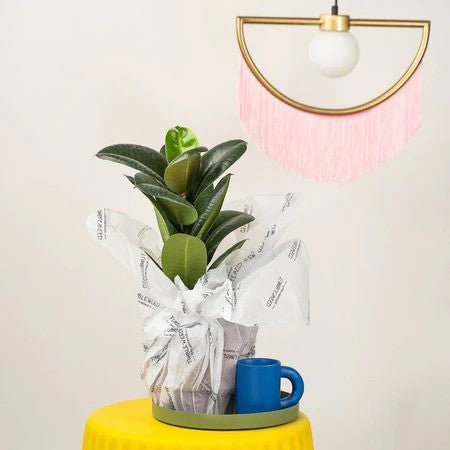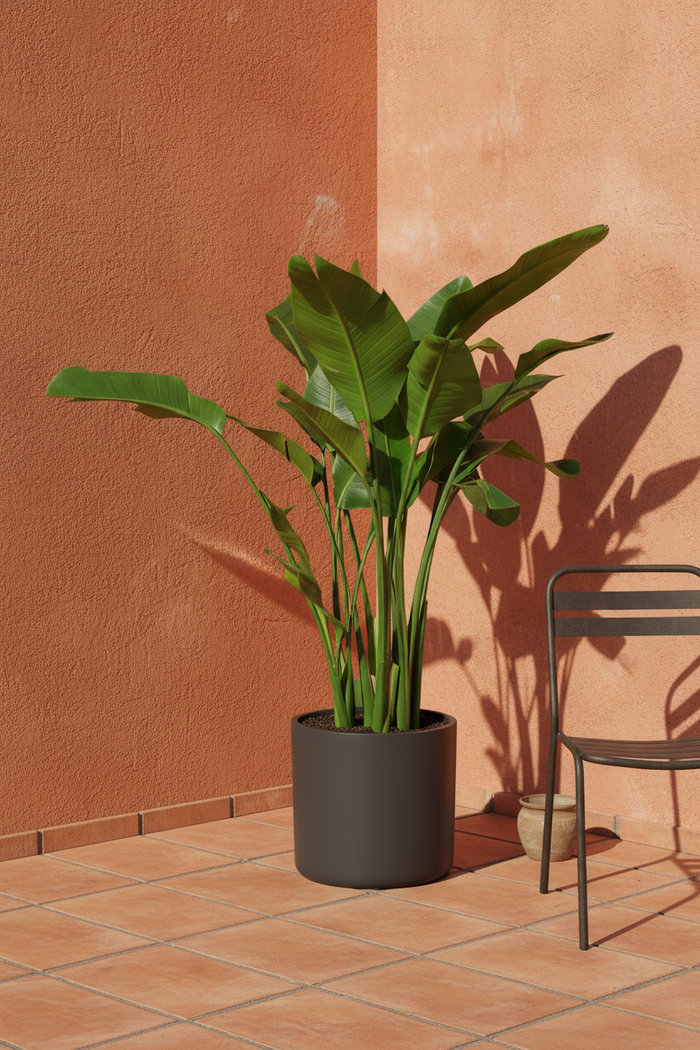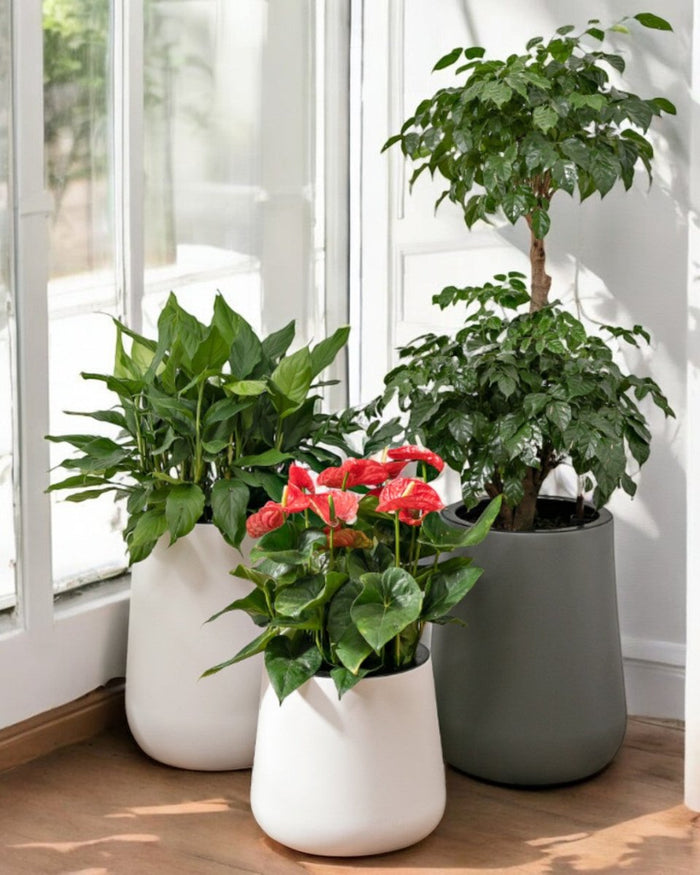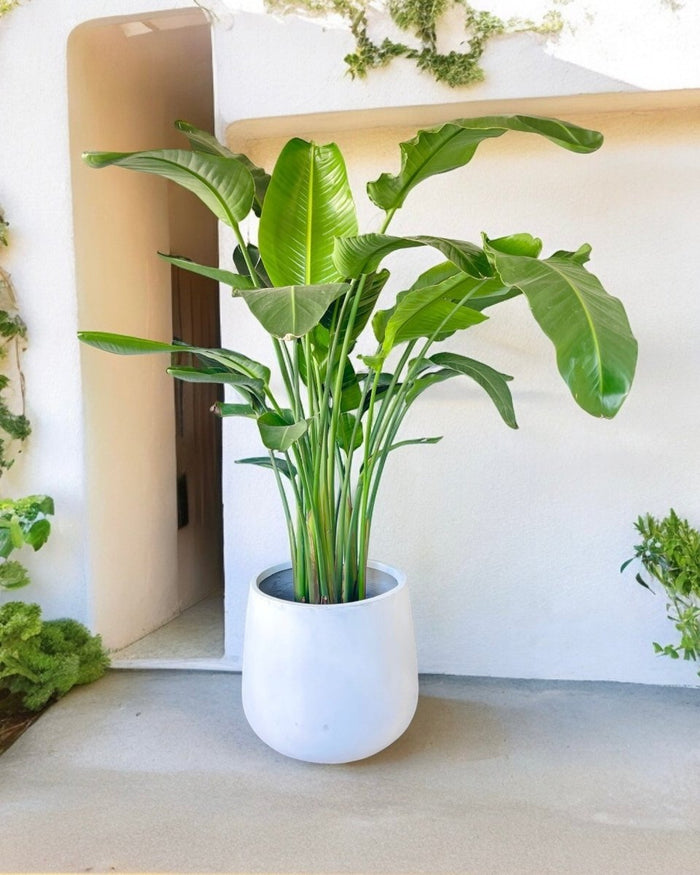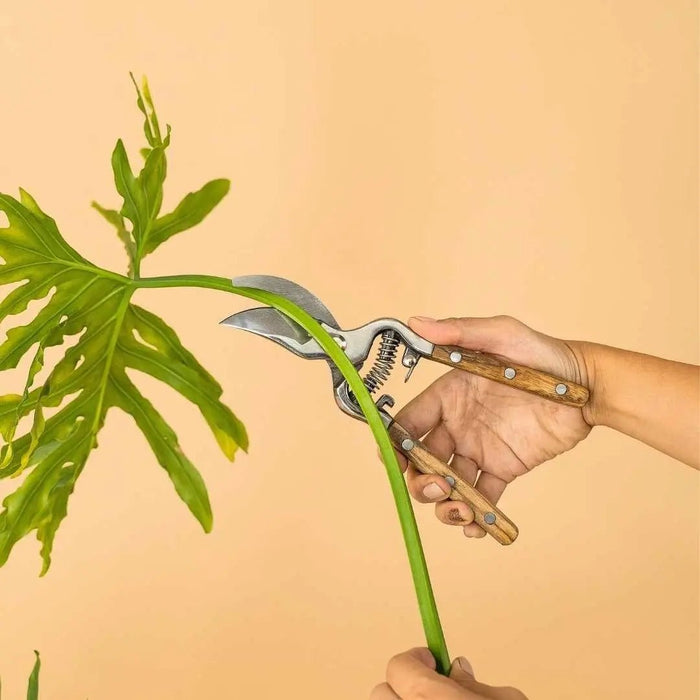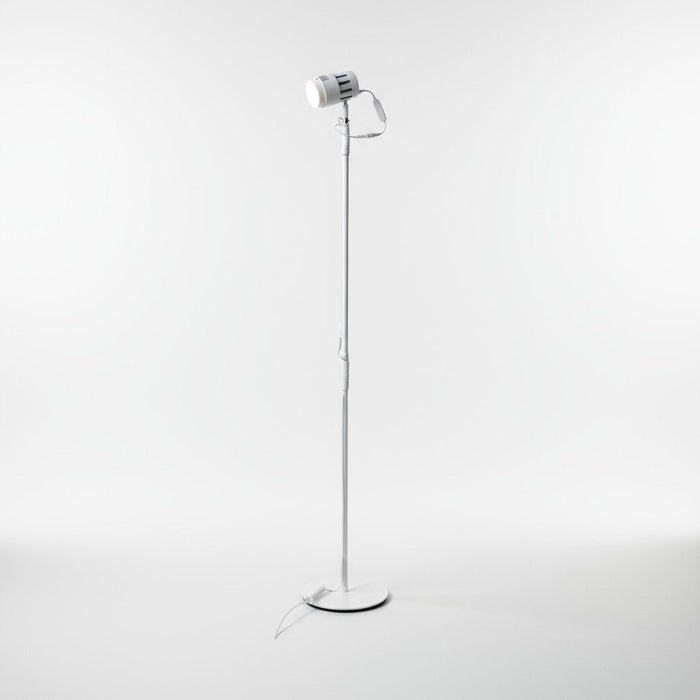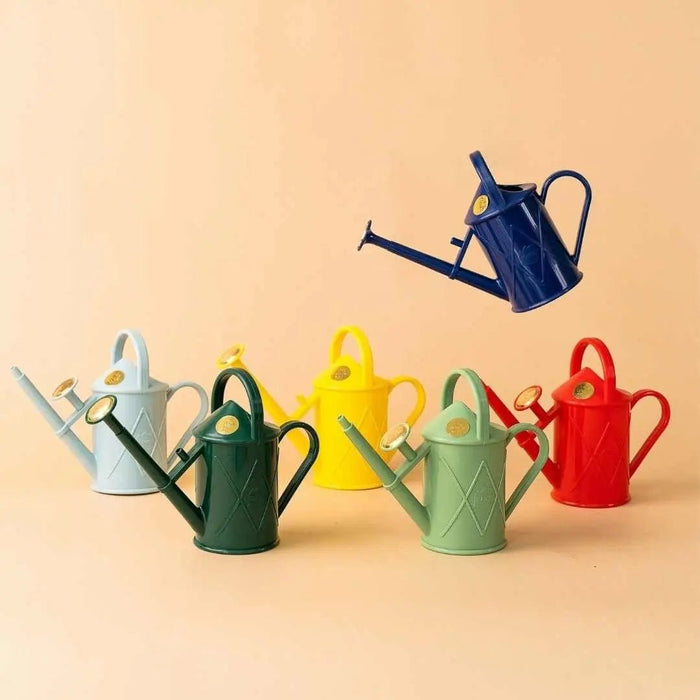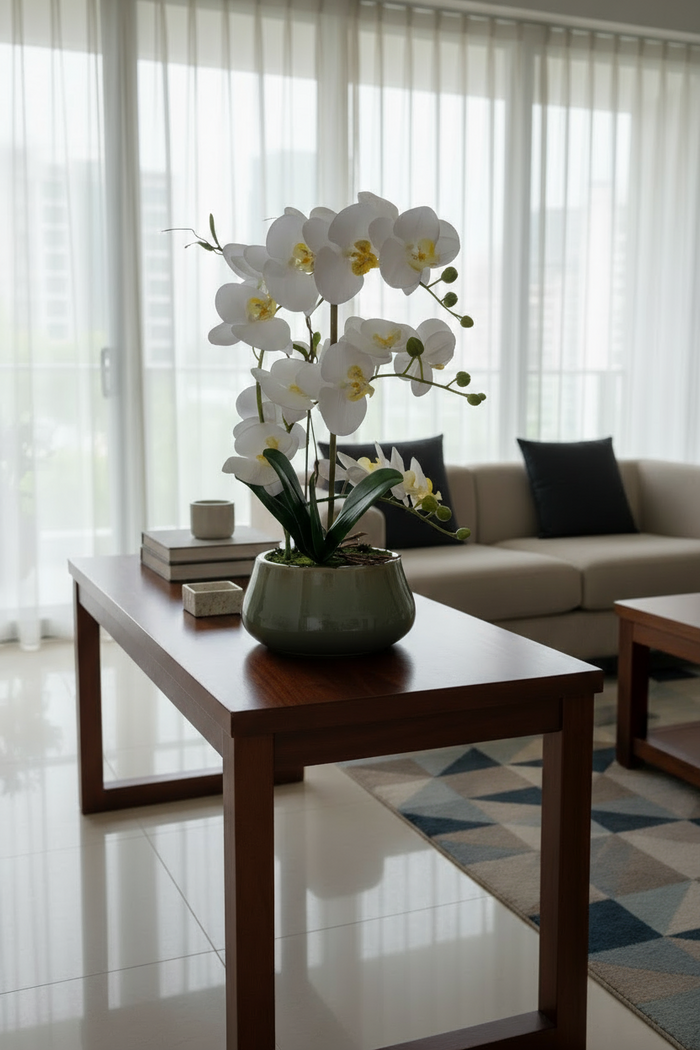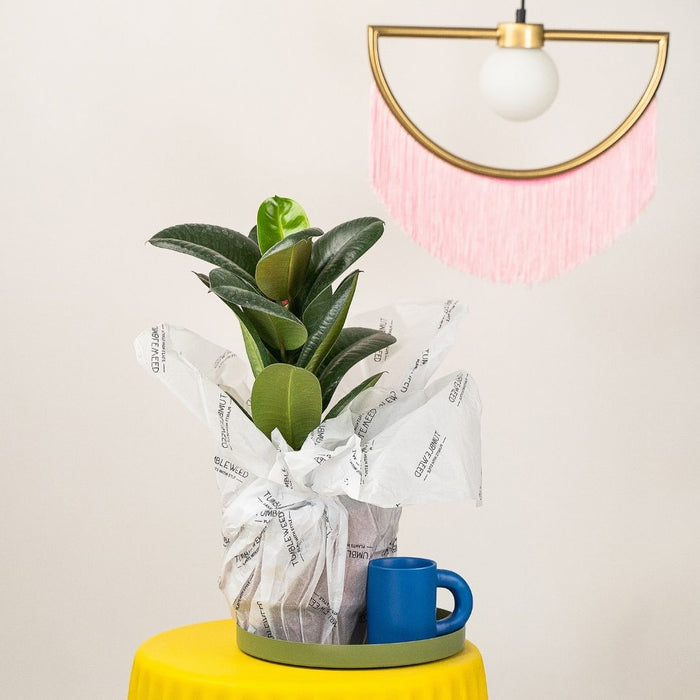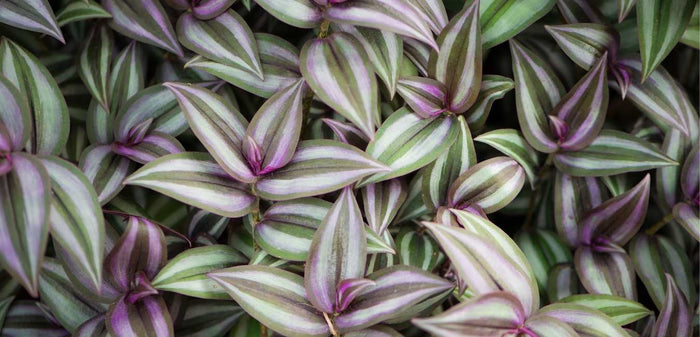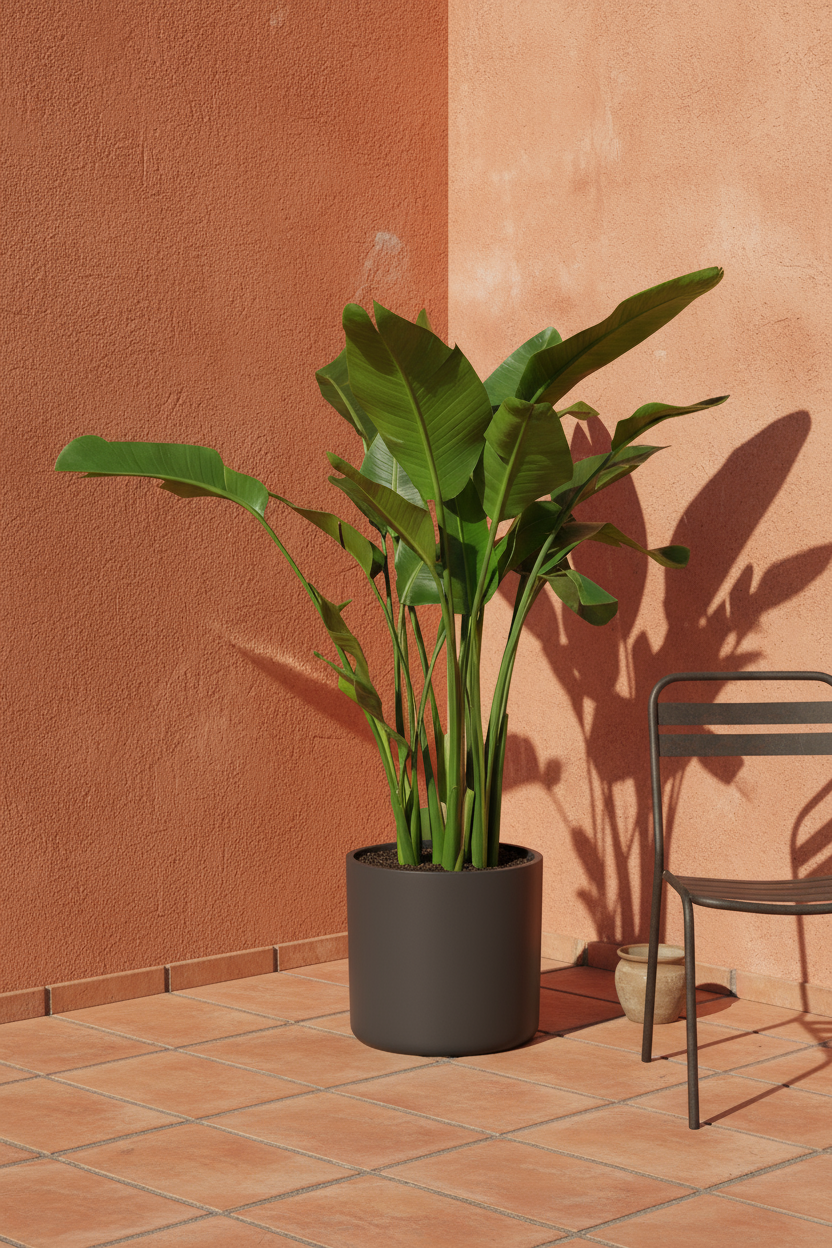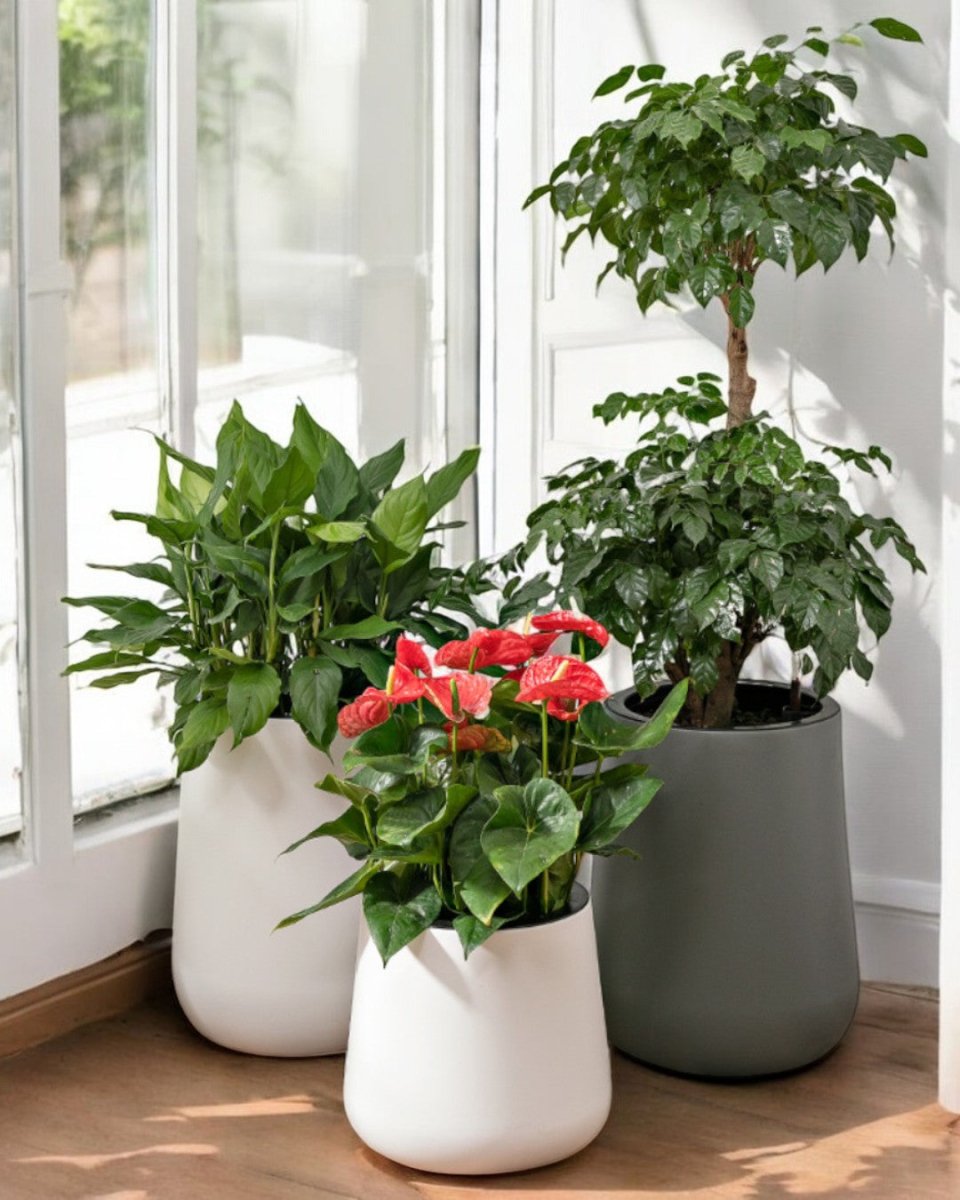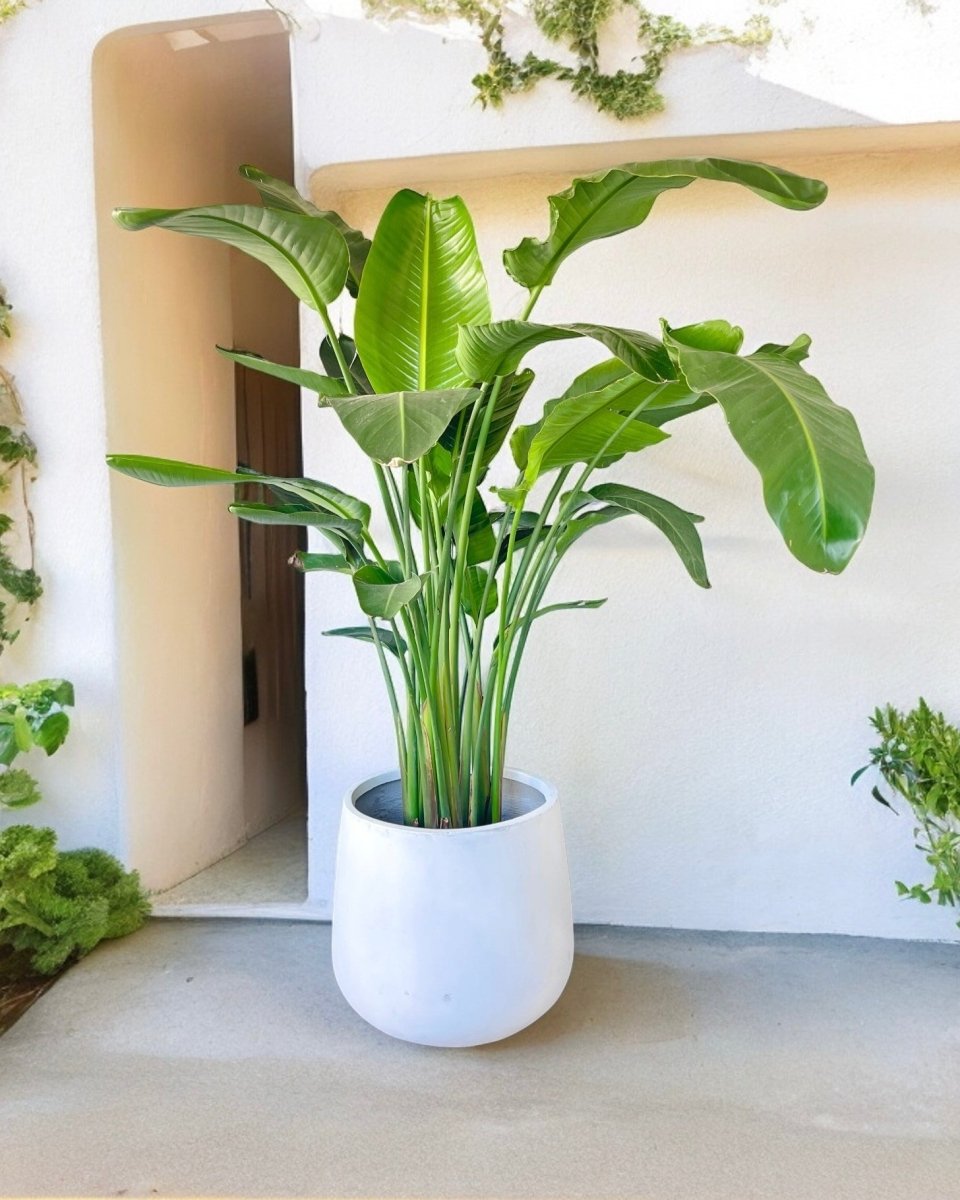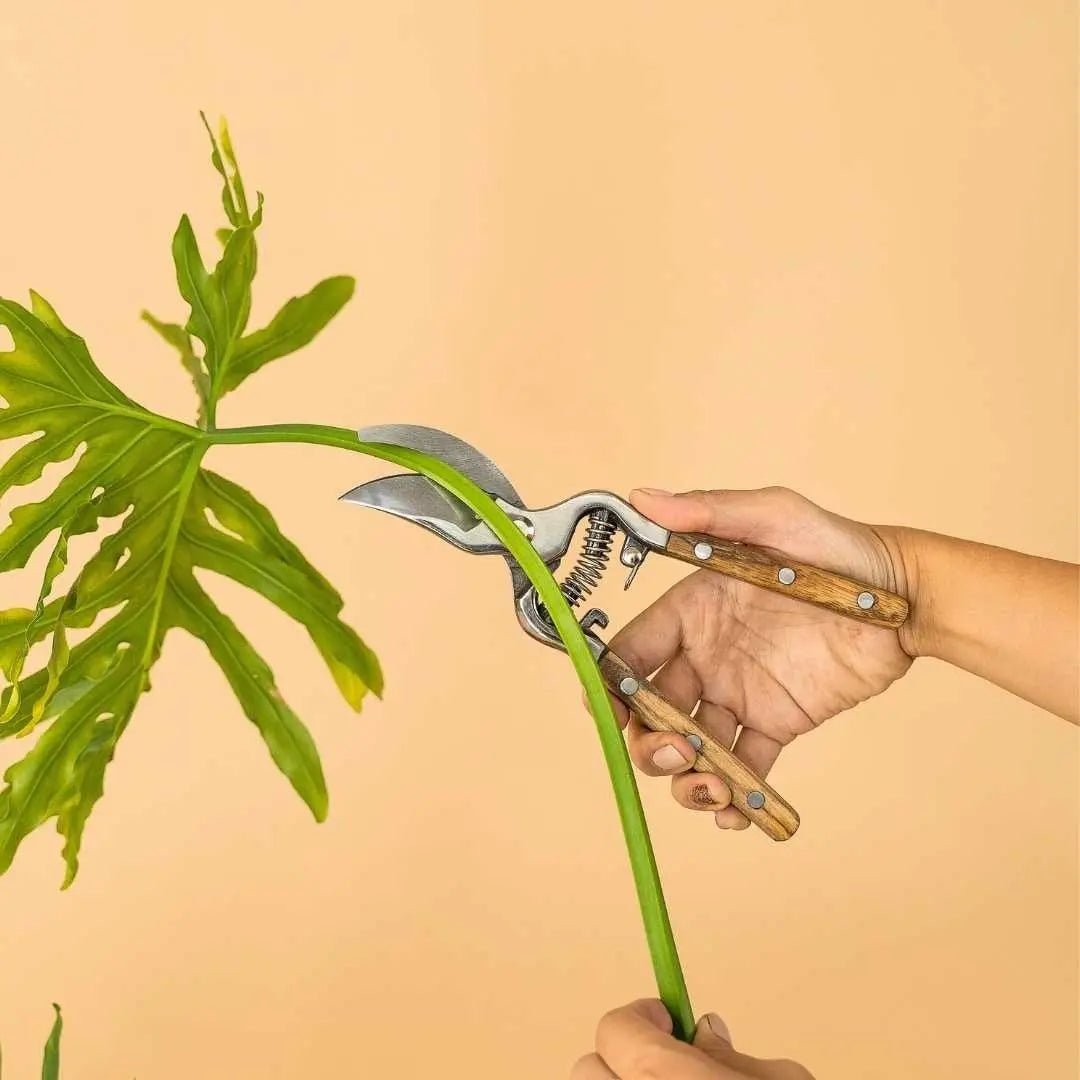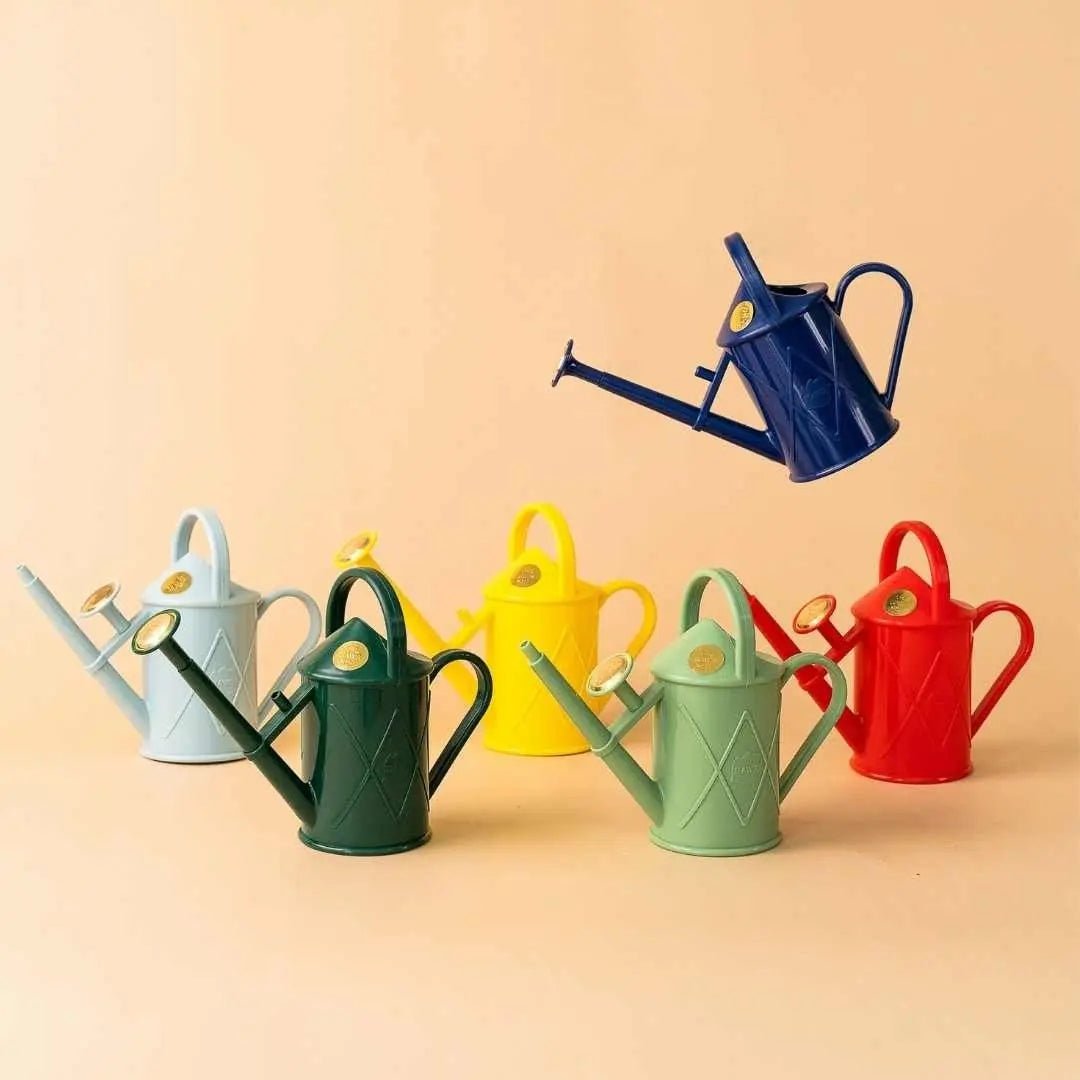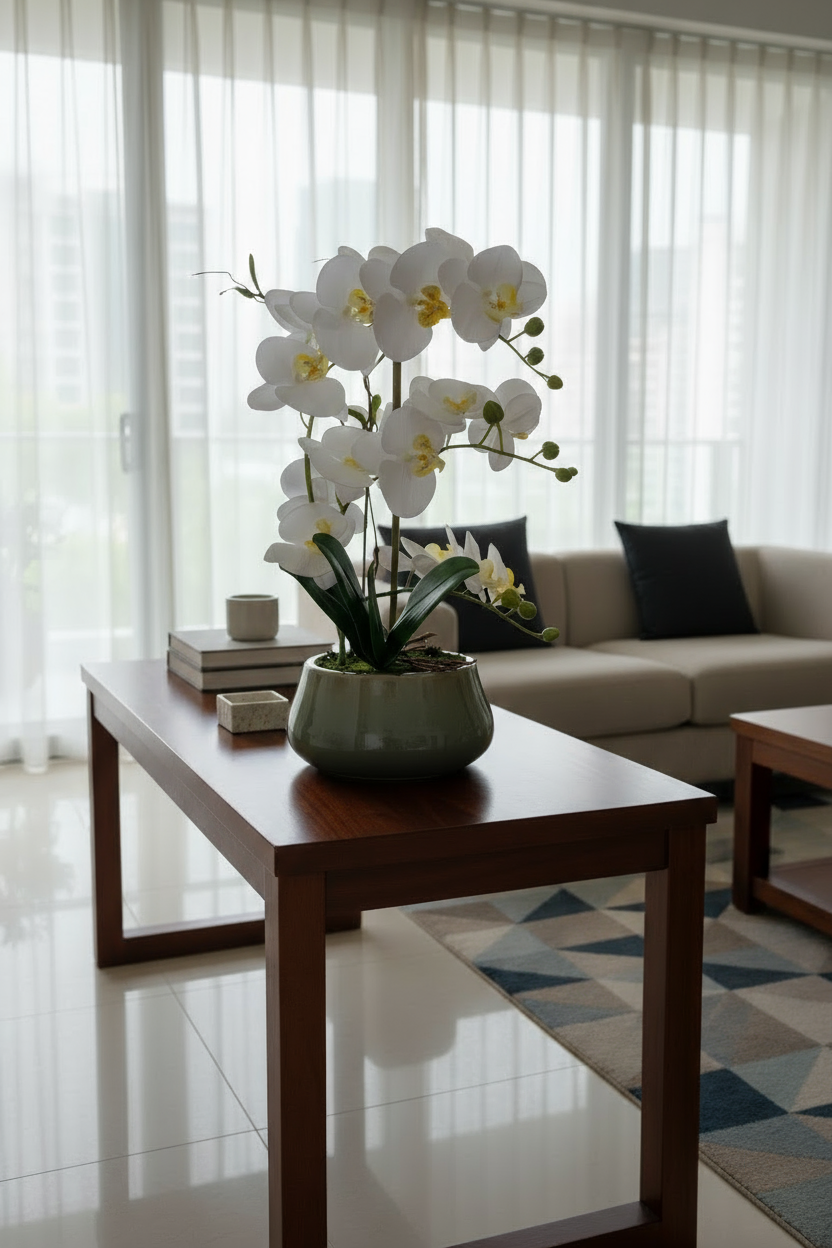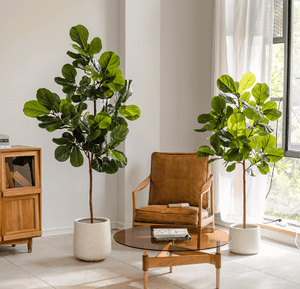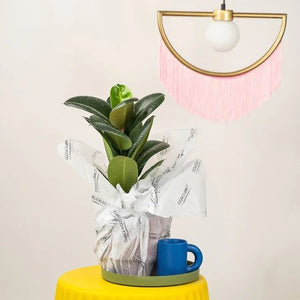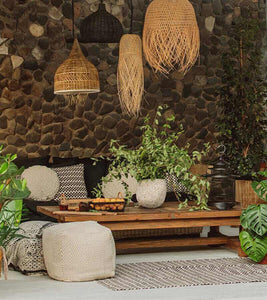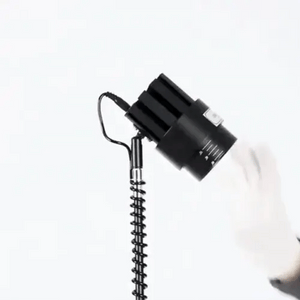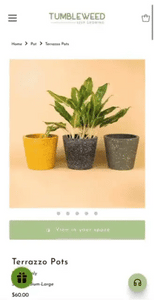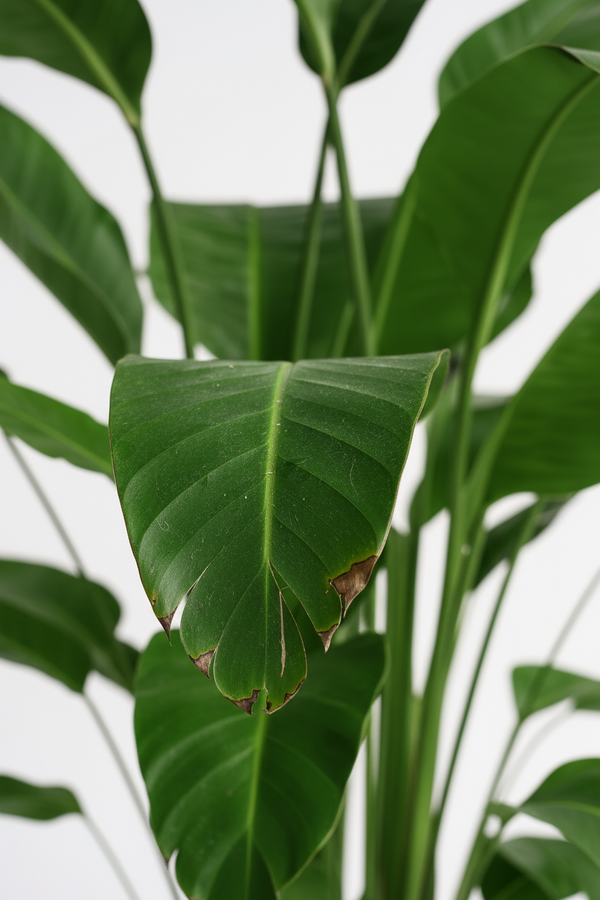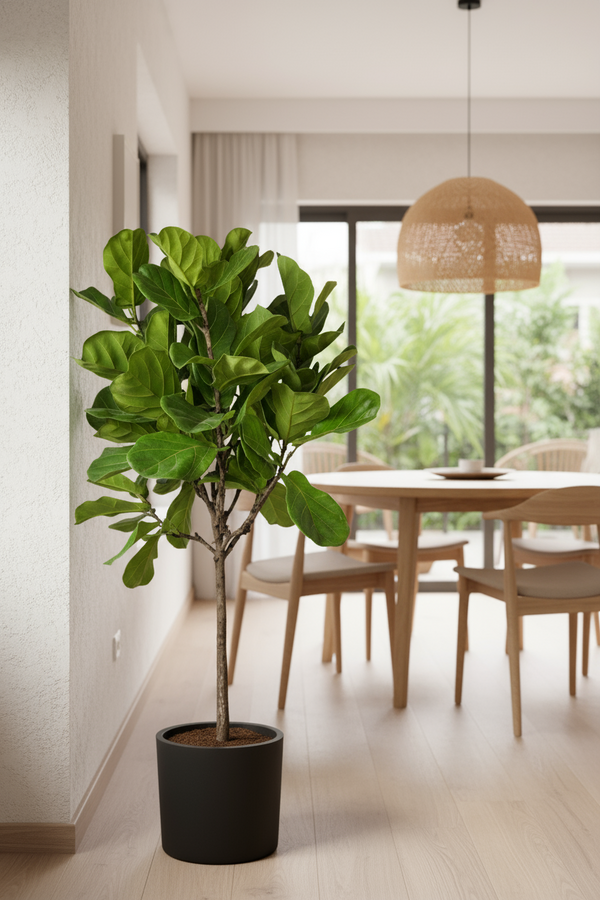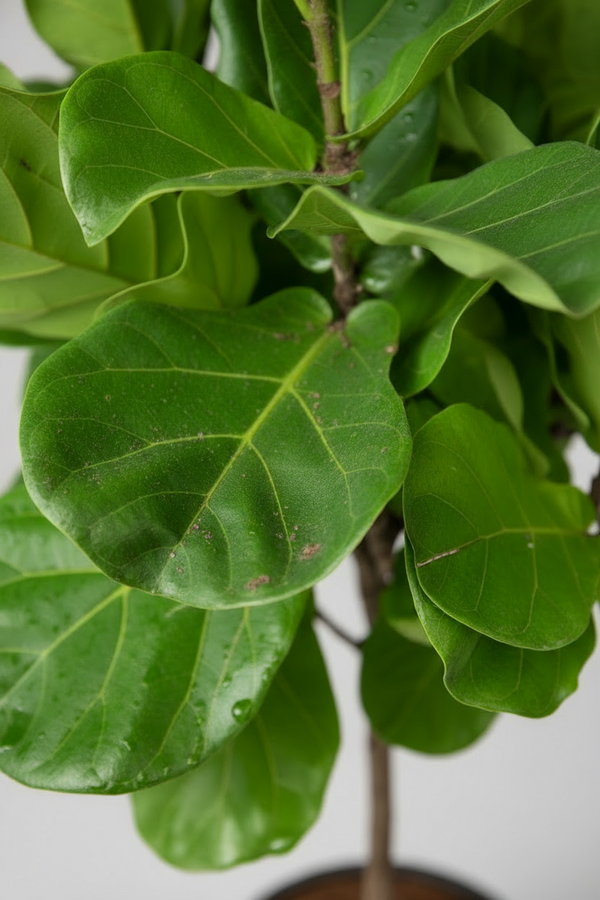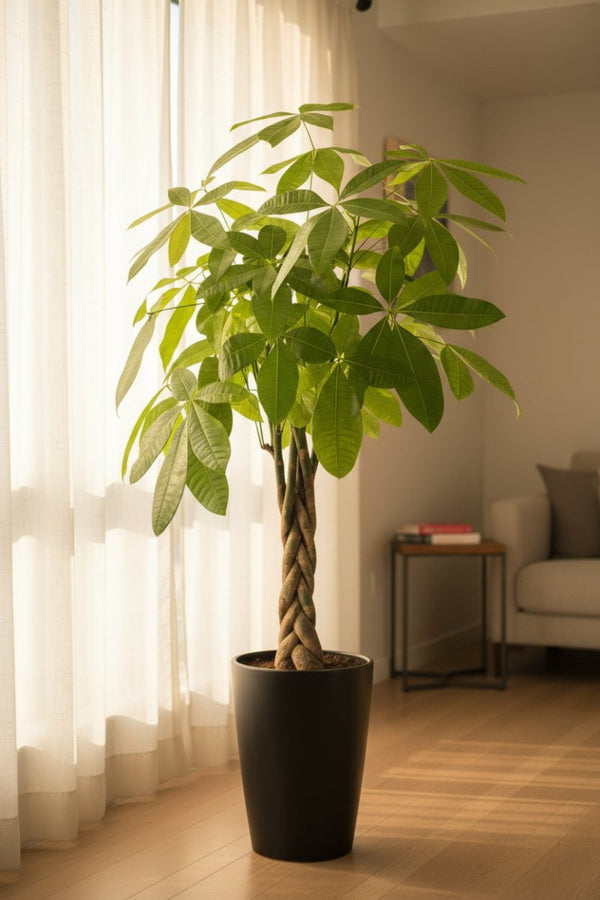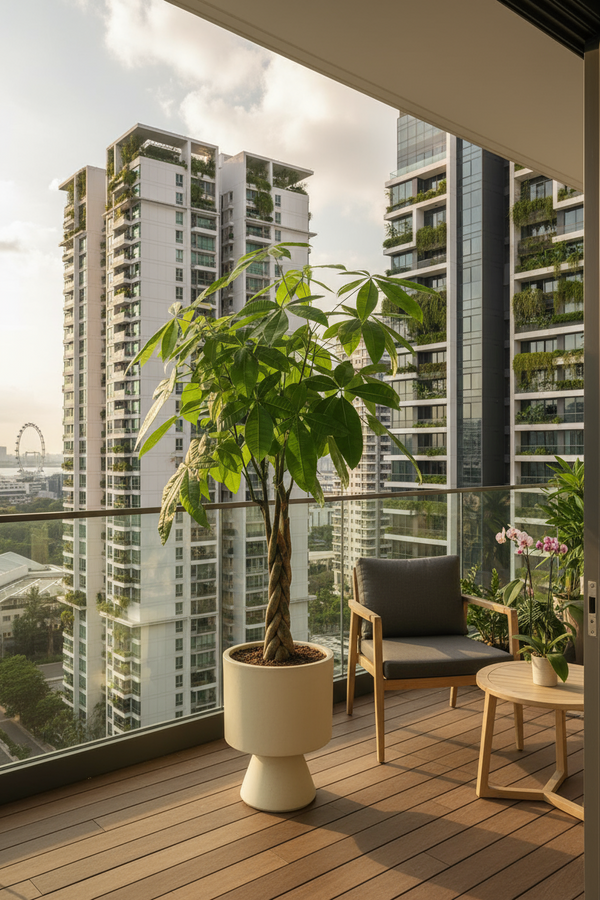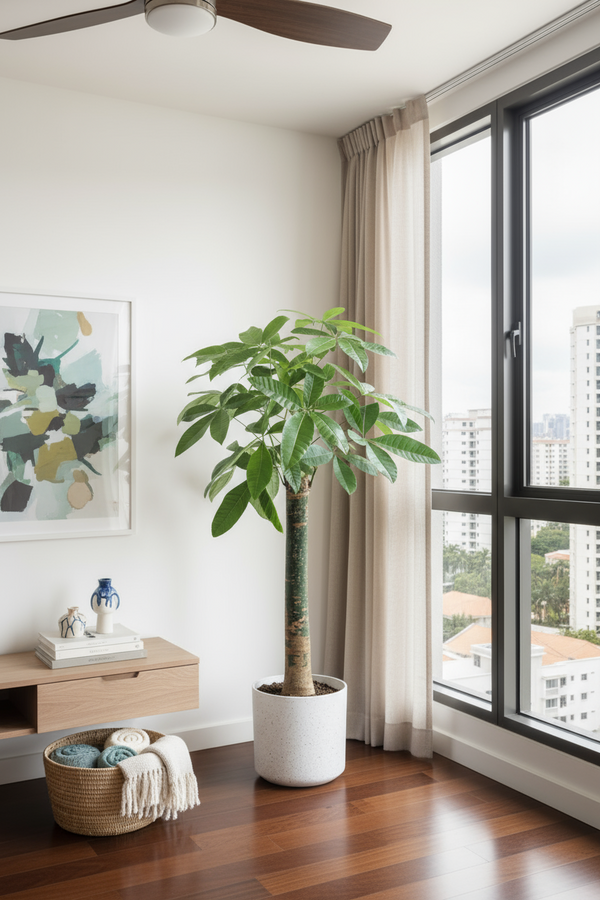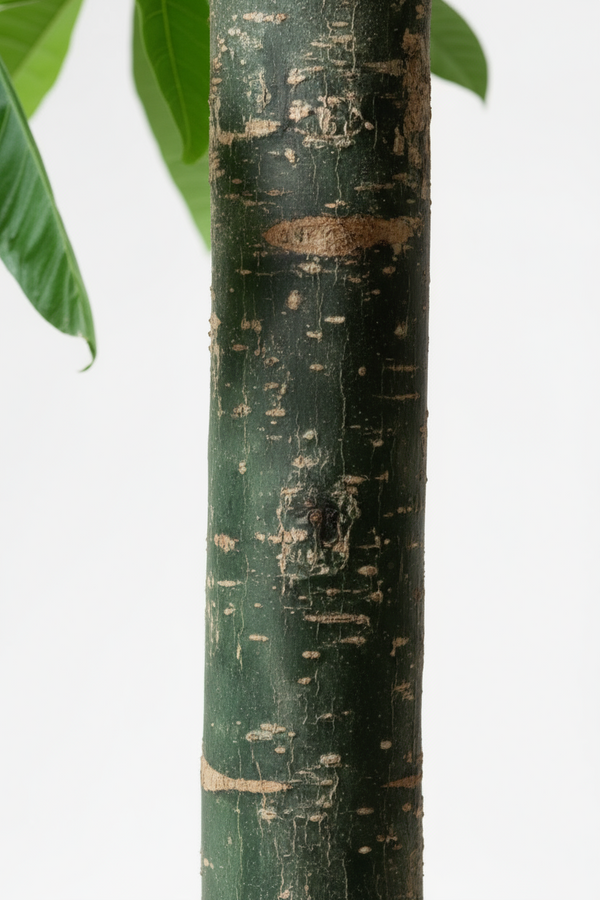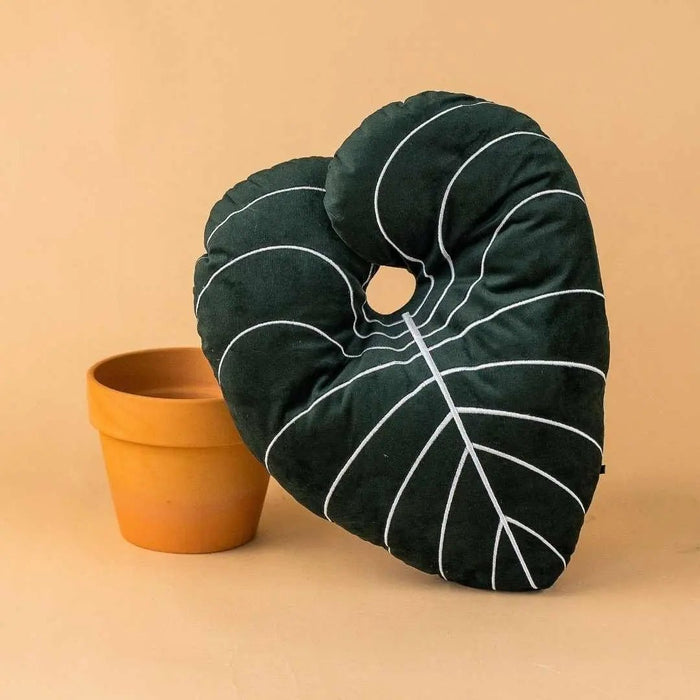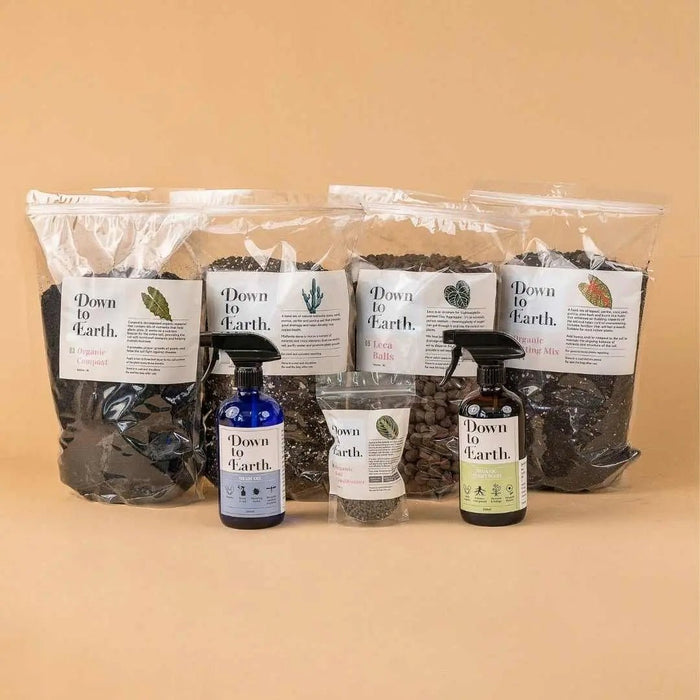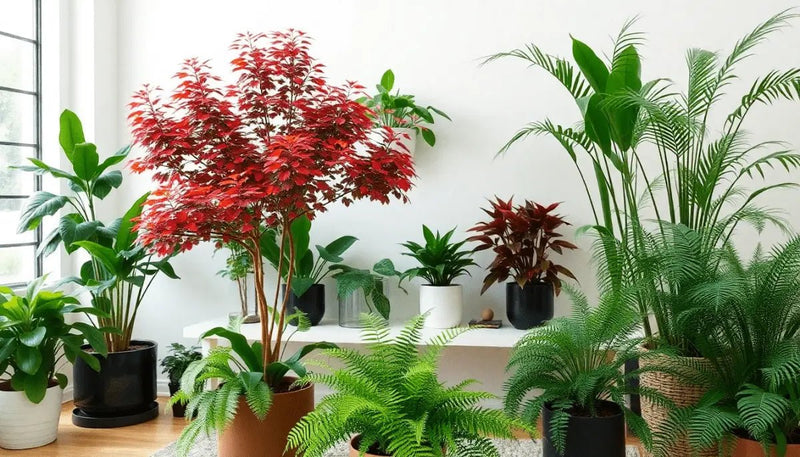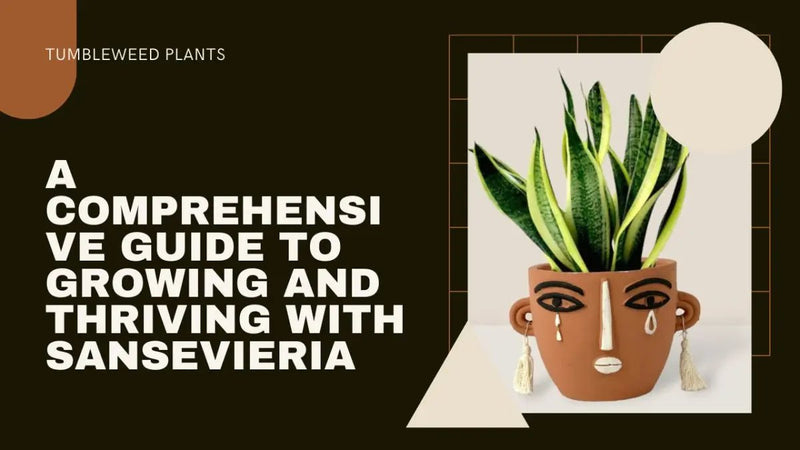How to Care for Houseplants: A Beginner’s Guide
Posted on March 19 2025
Introduction to Houseplant Care
Houseplant care begins with understanding the basic needs of indoor plants. Each plant species has unique requirements, yet certain fundamental care principles apply universally. Recognizing these essentials can help ensure that plants grow healthy and thrive in an indoor environment.
Light is one of the most critical factors for houseplant survival. Different plants require varying levels of light, ranging from bright, direct sunlight to low indirect light. Placing a plant in its optimal light condition promotes photosynthesis and overall health. For instance, succulents and cacti thrive in bright, sunny windows, while ferns and pothos often do well in shadier spaces.
Watering practices must also be tailored to the plant’s specific needs. Some plants prefer their soil to dry out almost completely between waterings, while others, such as ferns, require consistently moist soil. Overwatering is a common mistake among beginners, leading to root rot and plant decline. Checking soil moisture with a finger or using a moisture meter can help avoid this issue.
Temperature and humidity play pivotal roles in plant growth. Most houseplants prefer temperatures between 65°F and 75°F and benefit from moderate to high humidity levels. In dry indoor environments, using a humidifier or placing a water tray near the plant can raise humidity.
Choosing the correct soil and providing adequate drainage are essential. Many species require well-draining soil to prevent waterlogging. Ensure pots have drainage holes to allow excess water to escape.
Lastly, regular maintenance practices such as pruning, repotting, and cleaning leaves keep houseplants in peak condition. Understanding these foundational principles is key to successful houseplant care.
Selecting the Right Houseplants for Your Space
When choosing houseplants, several factors need to be considered to ensure they thrive in the intended environment. First, assess the lighting conditions of the space. Plants like pothos, snake plants, and philodendrons perform well in low-light settings, while succulents, fiddle leaf figs, and rubber plants thrive in spaces with ample sunlight. Evaluate whether the light comes directly or indirectly, as some plants may be sensitive to direct exposure.
Understanding the available room temperature and humidity levels is equally crucial. Tropical plants, including ferns and peace lilies, prefer higher humidity and consistent warmth, whereas cacti and other drought-resistant species favor dry and moderate conditions. Observing temperature fluctuations, such as near windows or air vents, can help avoid placing sensitive plants in unsuitable locations.
Consider the specific size and growth habits of different plants when selecting them. Large plants like monstera and dracaenas are ideal for spacious areas, while compact varieties like bonsai trees and pothos are better suited for smaller spaces or shelves. Additionally, hanging plants like string of pearls and ivy can maximize vertical space in areas with limited surface options.
Account for maintenance requirements when selecting houseplants. For beginners, low-maintenance options such as pothos, spider plants, and zz plants are highly recommended due to their adaptability and minimal care needs. Higher-maintenance options such as orchids and calatheas may require precise watering schedules or frequent attention, making them better suited for experienced growers.
Finally, tailor plant choices to the purpose of the decor. Vibrantly colored plants like croton can act as focal points, while neutral-toned options such as peace lilies can blend seamlessly with a variety of interiors. Personal preferences for aesthetics, combined with the practical considerations above, ensure suitable houseplants for any space.
Understanding the Basics of Light Requirements
Houseplants depend heavily on light for photosynthesis, which is essential for their growth and overall health. Different plants have varying light requirements, and understanding these differences is the first step in providing optimal care. Light can generally be categorized into three types: bright, indirect, and low light. Knowing how to assess both the light in your home and the needs of specific plants is key to successful indoor gardening.
Types of Light Environments
Bright Light: This type of light exists near windows that receive direct sunlight through most of the day. South-facing windows are ideal for bright-light plants such as succulents, cacti, and crotons. It is crucial to consider that prolonged exposure to direct sunlight can scorch leaves unless the plant is well-adapted.
Indirect Light: Indirect light occurs when sunlight is filtered through curtains or reflected off walls. Plants like pothos, peace lilies, and philodendrons thrive in indirect light. These plants benefit from being close to windows but away from direct sun exposure.
Low Light: Areas far away from windows or corners with limited access to natural light are considered low-light environments. Low-maintenance plants like snake plants, ZZ plants, and ferns are better suited for these conditions. However, even low-light plants require occasional exposure to brighter light.
Factors to Consider
- Duration of Light: Consider how many hours of light each room receives. Many houseplants prefer about 10-12 hours of light daily. If natural light is insufficient, artificial sources like grow lights can be used to supplement.
- Seasonal Changes: Understanding how sunlight patterns shift throughout the year helps ensure plants receive consistent light. For example, shorter winter days may necessitate repositioning plants or adding artificial lighting.
Understanding the specific light requirements of houseplants enables proper placement, helping to prevent issues like leggy growth or faded foliage.
Watering 101: How to Avoid Overwatering and Underwatering
Proper watering is a crucial aspect of houseplant care, as both overwatering and underwatering can harm plants. Understanding the unique water requirements of each plant type is essential to ensure their health and longevity.
Signs of Overwatering
Overwatering a plant can lead to root rot, fungal issues, and leaf discoloration. Symptoms of overwatering include:
- Yellowing leaves, often soft or limp in texture
- Mold or algae growth on the soil surface
- A consistently damp or mushy potting mix
- Unpleasant odors from the soil, indicating rotten roots
Signs of Underwatering
While underwatering results in slower damage, its effects can still be detrimental to plants. Common signs include:
- Crispy, dry, or curled leaf edges
- Soil that pulls away from the edges of the pot
- Wilting, even after the plant receives adequate sunlight
- Stunted growth and leaf drop
Tips to Gauge Watering Needs
To avoid overwatering or underwatering, individuals should assess the plant and soil conditions before watering. A simple way to check is by using the “finger test.” Insert a finger about two inches into the soil. If it feels dry, the plant likely needs water. For more accuracy, a soil moisture meter can be used. Additionally, understanding whether plants prefer consistently moist or drying-out periods between watering is critical.
Best Practices for Watering Houseplants
- Choose the right pot and soil: Pots with drainage holes and well-draining soil prevent waterlogging.
- Follow a consistent schedule: While frequency depends on the plant type and environment, regular checks promote better moisture balance.
- Water thoroughly, not frequently: Ensure water flows out of the drainage holes to hydrate the root system fully. Avoid small, frequent watering that only wets the soil surface.
- Account for seasons: Plants may need less water during dormant winter months and more during active growth seasons.
Careful observation and mindful adjustments to watering routines can promote thriving houseplants and prevent the pitfalls of overwatering or underwatering.
The Role of Humidity in Houseplant Health
Humidity plays a critical role in maintaining the health and vitality of houseplants, as many species are native to environments with consistent moisture levels in the air. Plants absorb moisture not only through their roots but also through their leaves, making ambient humidity an essential factor for their overall wellbeing.
Different houseplants have varying humidity needs. Tropical plants, such as ferns, orchids, and peace lilies, generally require higher levels of humidity to thrive, mimicking the conditions of their native habitats. On the other hand, succulents and cacti, which originate from arid regions, prefer lower humidity levels and can suffer if the air becomes too moist.
In low-humidity environments, plants may exhibit signs of stress, such as browning leaf edges, curled leaves, or slow growth rates. Excessively dry air can reduce a plant’s ability to carry out transpiration effectively, impacting its nutrient uptake and water balance. By contrast, overly humid conditions can encourage the growth of mold, fungus, and pests, which may harm plants and soil quality.
There are effective methods to maintain optimal humidity levels for houseplants. For increased humidity, a humidifier can be used to regulate indoor moisture. Grouping plants closely together also raises surrounding humidity naturally, as plants release water vapor during transpiration. For more targeted approaches, placing a tray with water and pebbles near plants can create localized humidity. Conversely, in overly moist environments, increasing ventilation or using a fan can prevent stagnant air and excessive dampness.
Carefully monitoring indoor humidity levels is essential, particularly during seasonal changes. Central heating during winter or air conditioning in summer can significantly lower humidity, and adjustments may be necessary. Utilizing a hygrometer allows for accurate measurements of humidity to match a plant’s specific requirements.
Understanding the role of humidity ensures plants flourish and grow resiliently in an indoor environment.
Choosing the Ideal Soil and Potting Mix
Selecting the right soil and potting mix is essential for the health and growth of houseplants. Different houseplants have unique needs, so it is important to consider their native environments and particular requirements when choosing the substrate. Proper soil provides adequate nutrients, drainage, and aeration, enabling plants to thrive indoors.
Soil Drainage and Aeration
Good drainage is crucial as overly compacted or waterlogged soil can lead to root rot. Houseplants commonly prefer soil that is light and airy, allowing oxygen to reach the roots. For this reason, potting mixes are often ideal; they typically include components like peat moss, coconut coir, or perlite for improved air circulation and water control. Adding perlite or sand to standard potting soil can enhance drainage further, especially for plants like succulents and cacti.
Nutrient Needs
The soil chosen should provide sufficient nutrients to support plant growth. General-purpose potting mixes often work well, but some plants benefit from specialized blends. Ferns, for example, thrive in rich, organic soil containing compost or leaf mold. Succulents and cacti prefer sandy, well-draining substrates with fewer organic materials. Always check if the soil is pre-fertilized and adjust feeding schedules accordingly.
Avoiding Garden Soil
Garden soil should generally be avoided for houseplants. It is often too heavy, lacks proper drainage, and may contain pests or pathogens. Prepackaged potting soils are sterilized to eliminate these risks and are designed to suit indoor growing conditions.
Tailoring Mixes for Specific Plants
Certain houseplants require custom blends for optimal health. For orchids, a bark-based mix is essential to replicate their natural epiphytic growing conditions. African violets benefit from a mix high in peat moss for moisture retention. Researching individual plant needs ensures an appropriate substrate choice.
The right soil and potting mix establish a solid foundation for vibrant, healthy houseplants, setting them up for long-term success.
Fertilizing Your Plants: Dos and Don’ts
Proper fertilization is essential for maintaining the health and growth of houseplants, but excessive or incorrect use can lead to damage. Understanding the specific needs of each plant is crucial when developing a fertilizing routine.
Dos of Fertilizing
- Choose the Right Fertilizer: Use a balanced, general-purpose fertilizer for most houseplants unless they have specific needs. Look for the correct NPK (Nitrogen, Phosphorus, Potassium) ratio that suits the type of plant.
- Follow Instructions Carefully: Dilute liquid fertilizers as instructed on the label. Over-concentration can harm plants.
- Fertilize During the Growing Season: Apply fertilizer more frequently in spring and summer when plants are actively growing. Reduce feeding during fall and winter when most plants enter dormancy.
- Monitor Plant Response: Keep an eye on your plant’s growth and appearance. Yellowing leaves or stunted growth could indicate nutrient deficiency, while browning edges may signify over-fertilizing.
- Use Organic Options When Possible: Organic fertilizers, like compost tea and worm castings, provide a gentle nutrient boost and improve soil health.
- Water Before Fertilizing: Ensure the soil is moist prior to fertilization. This helps distribute nutrients evenly and prevents root burn.
Don’ts of Fertilizing
- Avoid Over-Fertilizing: Over-application can lead to salt buildup in the soil, damaging roots and leaves. Always err on the side of caution.
- Don’t Fertilize Newly Planted or Repotted Plants: Allow several weeks for the plant to establish in its new environment before adding fertilizer.
- Avoid Fertilizing Sick Plants: Wait until the plant recovers from pests, diseases, or stress before feeding it, as fertilization may worsen its condition.
- Don’t Ignore Individual Needs: Different plants have varied nutrient requirements. Research the needs of your specific plants instead of applying the same feeding schedule universally.
- Avoid Using Fertilizer on Dry Soil: Applying fertilizer to dry soil increases the risk of root burn from concentrated nutrients.
- Don’t Fertilize in Excessive Heat: High temperatures combined with fertilization can further stress plants, especially during peak summer heat.
A strategic approach to fertilization ensures your houseplants receive the nutrients they need to thrive while minimizing the risk of harm. Establishing a consistent feeding routine based on plant type and seasonal cycles will promote healthy growth and vibrant foliage.
Recognizing and Treating Common Houseplant Problems
Houseplants, while generally low-maintenance, can exhibit symptoms of distress due to improper care or environmental factors. Identifying these issues early is essential for restoring plant health.
Common Signs of Distress
Yellowing Leaves Yellow leaves often signal overwatering, poor drainage, or nutrient deficiencies. If the soil feels consistently soggy, the roots may not be receiving enough oxygen. Alternatively, a lack of nitrogen or other key nutrients could be the culprit.
Wilting or Drooping Plant A plant that wilts may be underwatered, exposed to extreme temperatures, or suffering from root damage. Dry, compacted soil that pulls away from the pot edges often indicates insufficient watering.
Brown and Crispy Edges Brown leaf tips or edges usually result from inconsistent watering or low humidity. Insufficient humidity is especially common with tropical plants like ferns and calatheas.
Pale or Faded Foliage Insufficient light or a pest infestation can cause leaves to lose their vibrancy. Mealybugs, spider mites, and aphids feed on plants, often leading to pale or weakened leaves.
Treatment Strategies
- Address Overwatering: Ensure the pot has proper drainage holes and reduce watering frequency. Check for root rot by examining the roots for mushiness or decay.
- Boost Humidity: Increase humidity by misting, grouping plants together, or using a tray filled with water and pebbles beneath the pot.
- Provide Adequate Light: Adjust the plant’s location to align with its light requirements—direct sunlight for succulents, indirect light for tropical varieties.
- Combat Pests: Isolate the affected plant and treat with insecticidal soap or neem oil. Wipe leaves gently to remove visible pests.
- Re-Pot If Needed: If soil drainage or compacted soil is an issue, repot the plant with fresh, well-draining soil.
Preventive Measures
- Regularly inspect plants for early signs of distress.
- Rotate pots to promote even light exposure.
- Use a balanced fertilizer during the growing season to support healthy foliage.
Early intervention paired with thoughtful care ensures that houseplants recover and thrive.
Pruning and Repotting: Maintaining Healthy Growth
Pruning and repotting are essential practices that ensure houseplants remain healthy, vibrant, and free from potential issues such as overcrowded roots or excessive growth of unhealthy foliage. Regular attention to these tasks can enhance both the appearance and longevity of indoor plants.
Pruning involves cutting away dead, diseased, or damaged leaves and stems. Keeping pruning shears sharp and sterilized is critical to minimize the risk of spreading diseases. For most houseplants, trimming yellowing or browning leaves is sufficient to maintain their health. Plants like pothos or philodendrons, which grow long vines, benefit from pruning to encourage fuller, bushier growth. When removing stems, one should always cut at a node—the point where leaves or roots grow—to promote new growth. Pruning also helps redirect the plant’s energy toward healthier parts, allowing it to thrive.
Repotting is necessary when a plant outgrows its container, as evidenced by roots protruding from drainage holes or soil that dries out too quickly. When choosing a new pot, selecting one that is only 1–2 inches larger in diameter than the current pot is important to prevent excessive soil retention, which can lead to root rot. The new pot should have proper drainage holes for optimal health. During repotting, gently loosen the plant’s roots to encourage them to spread into the fresh soil. Using a potting mix tailored to the plant type, such as a cactus mix for succulents or a peat-based blend for tropical plants, further supports balanced growth.
Regular observation for signs of overgrowth or distress ensures the right timing for pruning and repotting. Proper attention to these tasks contributes to the overall vitality and structure of the plant.
The Importance of Consistency in Plant Care
Consistency is a cornerstone of successfully caring for houseplants. Plants thrive when provided with a predictable and stable environment that meets their specific needs. Variations in watering, lighting, humidity, and temperature can lead to stress, stunted growth, or even death for many species. Understanding and consistently maintaining these factors is essential for ensuring the long-term health of houseplants.
Watering practices require particular attention, as overwatering or underwatering are common mistakes among beginners. Each plant has unique water requirements based on its type, environment, and growth stage. Inconsistent watering schedules can lead to root rot, dry soil conditions, or other issues. By adhering to a regular watering routine and adjusting for seasonal changes, caregivers can avoid these pitfalls and promote healthy growth.
Lighting conditions must likewise remain consistent. While some plants thrive in bright, direct sunlight, others prefer partial or shaded light. Frequent changes in placement or exposure can disrupt the plant’s ability to photosynthesize effectively. Using tools like grow lights for indoor plants can help maintain uniform lighting conditions, especially in homes with limited natural light.
Temperature and humidity also play vital roles in plant care. Sudden fluctuations in temperature or drops in humidity can lead to leaf damage or a slowed growth cycle. Consistently monitoring the indoor environment and utilizing humidifiers or heaters where necessary can help create a stable space tailored to the plant’s needs.
Establishing a routine for fertilization is another crucial aspect that requires consistency. Plants deplete nutrients over time, and failing to supplement their diet regularly can impair their development. Following a reliable fertilization schedule ensures plants receive adequate nourishment without risking overfeeding or nutrient imbalances.
Ultimately, consistent care allows houseplants to develop resilience and grow steadily. By observing and responding to plants’ needs in a systematic way, individuals can foster thriving indoor gardens while minimizing challenges.
Top Tips for Seasonal Houseplant Maintenance
Maintaining houseplants requires adjusting care routines based on seasonal changes, as plants respond differently to varying light, temperature, and humidity levels throughout the year. Having a clear understanding of these seasonal shifts ensures optimal growth and health for houseplants.
Spring
- Repot if Needed: Spring is an ideal time to repot houseplants as they typically resume active growth. Select pots that provide adequate drainage and space for root expansion.
- Fertilize Regularly: Begin a consistent fertilization schedule to replenish nutrients that fuel the plant’s growth. Use a balanced fertilizer specifically designed for houseplants.
- Increase Watering: Growth requires more hydration, but ensure the soil dries partially between waterings to avoid root rot.
- Inspect for New Growth: Look for signs of budding or leaf expansion and adjust care to support these changes.
Summer
- Provide Shade for Sensitive Plants: Intense sunlight may scorch leaves of delicate plants. Place them in indirect light or use sheer curtains to filter rays.
- Prevent Overwatering: While summer heat increases evaporation, overwatering can still lead to excessive moisture buildup. Monitor soil conditions closely.
- Control Humidity: Dry summer air can deprive plants of moisture. Use a humidifier or mist plants regularly to maintain ideal humidity levels.
Fall
- Reduce Fertilizer Application: Many houseplants slow their growth as fall arrives; scale back the frequency of feeding to avoid overloading nutrients.
- Adjust Watering Routine: Cooler temperatures lead to slower evaporation rates. Water less often but ensure consistency based on the individual plant’s needs.
- Clean and Prune: Remove dying leaves, stems, or flowers to prevent disease and keep the plant healthy during its slower growth period.
Winter
- Provide Extra Lighting: Due to shorter days, supplement natural light with grow lights to prevent plants from becoming leggy.
- Shield from Drafts: Cold air from windows or doors can harm houseplants. Place them in stable, warm locations away from chilly drafts.
- Monitor Soil Moisture: Indoor heating can dry the soil faster. Check regularly but remain cautious of overwatering, as growth is minimal during this time.
- Pause Fertilization: Cease feeding during winter dormancy to give plants a natural rest period.
Seasonal houseplant care helps cultivate robust, thriving plants all year round by aligning maintenance practices with environmental changes.
Creating a Routine: How to Stay on Top of Your Care Schedule
Establishing a consistent routine is essential for ensuring a houseplant’s health and longevity. Regular care helps prevent common problems such as underwatering, overwatering, or neglecting necessary maintenance. The routine must account for watering, feeding, pruning, cleaning, and checking for pests. Each step should be adjusted to the specific needs of the types of plants in your collection, as not all houseplants require identical attention.
Steps to Build a Reliable Care Schedule
Understand the Needs of Each Plant Begin by identifying the care requirements of your houseplants. Research factors such as water needs, sunlight preferences, fertilization schedules, and repotting timelines. Once you understand these needs, categorize your plants based on similar requirements to streamline your care process.
Set Specific Days for Watering Assign particular days for watering based on each plant’s needs and the season. For example, succulents may need watering every two weeks, while tropical plants may require attention every few days. Consider adding reminders or alarms to your calendar to avoid forgetting.
Organize Feeding Times Establish quarterly or monthly intervals to apply fertilizers according to the manufacturer’s instructions. Most houseplants benefit from feeding during their active growing seasons, typically spring or summer, rather than dormant periods like winter.
Incorporate Routine Maintenance Include tasks such as leaf cleaning, pruning, and rotation in your schedule. Removing dust from leaves enhances light absorption, rotation prevents uneven growth, and pruning promotes healthier plants. These tasks can be performed biweekly or monthly, depending on the plant type.
Monitor for Pests and Health Issues Regularly inspect leaves and stems for signs of pests like spider mites or aphids. Spotting infestations early prevents damage. Also, look for discoloration or wilting, which may indicate overwatering, underwatering, or nutrient deficiencies.
Tips for Staying Consistent
- Create Visual Aids: Use charts, care journals, or apps specifically designed for houseplant maintenance to organize tasks.
- Account for Environmental Changes: Adjust your routine for seasonal changes in light, temperature, and humidity that influence plant growth.
- Combine Similar Tasks: Group plants with similar requirements for quicker and more efficient care.
A well-structured and tailored care routine reduces stress for the caregiver while promoting the overall health of your houseplants.
FAQs: Addressing Common Beginner Concerns
1. How often should houseplants be watered?
The frequency of watering depends on the plant type, soil, and environment. Most plants prefer the soil to dry slightly between waterings. For instance, succulents need less frequent watering compared to ferns. Beginners are advised to check the top inch of soil; if it feels dry, it may be time to water.
2. Do houseplants need fertilizer, and how should it be applied?
Yes, many houseplants benefit from regular fertilization to replenish nutrients. Use a balanced, water-soluble fertilizer diluted to half strength during the growing season (spring and summer). Avoid over-fertilizing, as this can damage roots and impair growth.
3. Can houseplants thrive in low-light conditions?
Certain houseplants, such as pothos, snake plants, and peace lilies, can adapt to low-light areas. However, plants requiring bright, indirect light will not thrive under these conditions. A grow light is a practical solution for insufficient natural light.
4. How can pests be managed on indoor plants?
Inspect plants regularly for signs of pests such as spider mites, aphids, or mealybugs. Wipe leaves with a damp cloth, isolate infested plants, and apply insecticidal soap or neem oil as needed. Maintaining proper air circulation and avoiding overwatering can also discourage pests.
5. What should be done if a plant’s leaves are turning yellow?
Yellowing leaves often indicate issues such as overwatering, underwatering, or insufficient light. Check the plant’s watering schedule, examine its light exposure, and ensure proper drainage. Additionally, remove any affected leaves to encourage healthy growth.
6. How is pot size determined for repotting?
Repotting should occur when roots outgrow the container or the plant becomes root-bound. Select a pot 1–2 inches larger in diameter than the current one. Using oversized pots can lead to water retention and root rot.
7. Are there specific plants recommended for beginners?
Yes, easy-to-care-for options include pothos, snake plants, spider plants, and ZZ plants. These are resilient and forgiving of beginner mistakes, offering an excellent starting point for new plant owners.
Conclusion and Encouragement for Beginners
Taking care of houseplants can be both rewarding and manageable, even for those new to the world of indoor gardening. Success begins with understanding the fundamental needs of plants, such as light, water, temperature, and humidity. Beginners should focus on developing a consistent care routine that considers these essentials, while also recognizing that each plant has its own unique requirements.
It is important for newcomers to houseplant care to approach the learning process with patience and enthusiasm. Mistakes are inevitable but serve as valuable opportunities for growth and improvement. For example, if a plant exhibits signs of overwatering, such as yellowing leaves or root rot, one can learn to adjust their watering technique or schedule by observing how the plant responds to changes. Over time, experiences like these can help new plant owners build a deeper understanding of their green companions.
Those who feel overwhelmed by the extensive variety of houseplants can start with hardier species specifically suited for beginners. Plants like pothos, snake plants, or syngoniums are known for their adaptability and resilience, making them ideal choices for individuals with limited experience or time. Introducing durable plants into one’s home provides the chance to experiment without fear of failure and builds confidence for future challenges.
Engaging with available resources such as care guides, online forums, or local gardening workshops also offers crucial support to beginners. Sharing experiences and seeking advice fosters a sense of community, where individuals can feel encouraged and motivated to continue nurturing their plants. As one gains knowledge, the joy of watching these living organisms grow and thrive can inspire a lifelong passion.
Ultimately, every houseplant journey begins with a willingness to try, coupled with an open mind to learn along the way. A comfortable space free from pressure and brimming with curiosity is essential for cultivating both a thriving home and a meaningful connection with nature indoors.

